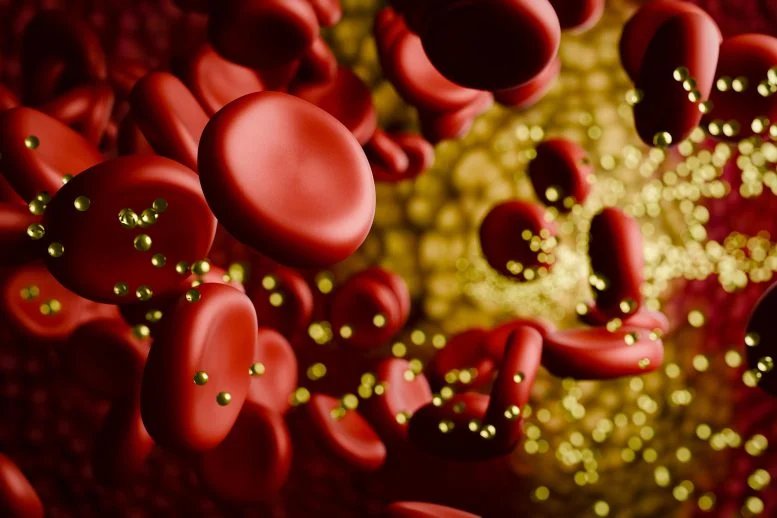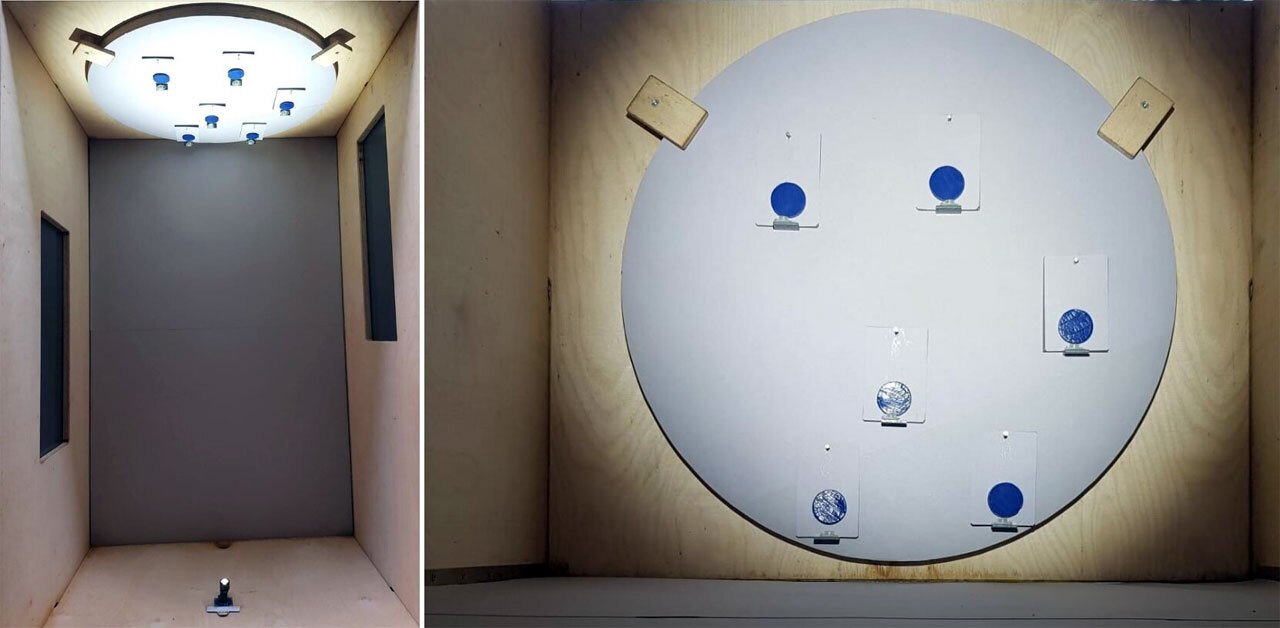New finds shed light on diet and locomotion in Australopithecus deyiremeda
New finds shed light on diet and locomotion in Australopithecus deyiremeda
Haile-Selassie, Y. et al. New species from Ethiopia further expands middle Pliocene hominin diversity. Nature 521, 483–488 (2015).
Haile-Selassie, Y. et al. A new hominin foot from Ethiopia shows multiple Pliocene bipedal adaptations. Nature 483, 565–569 (2012).
Stern, J. T. Jr & Susman, R. L. The locomotor anatomy of Australopithecus afarensis. Am. J. Phys. Anthropol. 60, 279–317 (1983).
Clarke, R. J. & Tobias, P. V. Sterkfontein member 2 foot bones of the oldest South African hominid. Science 269, 521–524 (1995).
Zipfel, B. et al. The foot and ankle of Australopithecus sediba. Science 333, 1417–1420 (2011).
DeSilva, J. M., Proctor, D. J. & Zipfel, B. A complete second metatarsal (StW 89) from Sterkfontein member 4, South Africa. J. Hum. Evol. 63, 487–496 (2012).
McNutt, E. J. et al. Footprint evidence of early hominin locomotor diversity at Laetoli, Tanzania. Nature 600, 468–471 (2021).
Leakey, M. G. et al. New hominin genus from eastern Africa shows diverse middle Pliocene lineages. Nature 410, 433–440 (2001).
White, T. Early hominids — diversity or distortion? Science 299, 1994–1997 (2003).
Kimbel, W. H., Rak, Y. & Johanson, D. C. The Skull of Australopithecus afarensis (Oxford Univ. Press, 2004).
Kimbel, W. H. et al. Was Australopithecus anamensis ancestral to A. afarensis? A case of anagenesis in the hominin fossil record. J. Hum. Evol. 51, 134–152 (2006).
McNutt, E. J., Zipfel, B. & DeSilva, J. M. The evolution of the human foot. Evol. Anthropol. 27, 197–217 (2018).
Wood, B. & Boyle, E. K. Hominin taxic diversity: fact or fantasy? Am. J. Phys. Anthropol. 159, 37–78 (2016).
Alemseged, Z. Reappraising the palaeobiology of Australopithecus. Nature 617, 45–54 (2023).
Harcourt-Smith, W. E. & Aiello, L. C. Fossils, feet and the evolution of human bipedal locomotion. J. Anat. 204, 403–416 (2004).
DeSilva, J. M. et al. Australopithecus sediba — the anatomy of the lower limb skeleton of Australopithecus sediba. Paleoanthropology 2018, 357–405 (2018).
DeSilva, J. M., McNutt, E. J. & Zipfel, B. in The Evolution of the Primate Foot: Anatomy, Function, and Palaeontological Evidence (eds Zeininger, A. et al.) 361–385 (Springer, 2022).
White, T. D., Lovejoy, C. O., Asfaw, B., Carlson, J. P. & Suwa, G. Neither chimpanzee nor human, Ardipithecus reveals the surprising ancestry of both. Proc. Natl Acad. Sci. USA 112, 4877–4884 (2015).
Prang, T. C., Ramirez, K., Grabowski, M. & Williams, S. A. Ardipithecus hand provides evidence that humans and chimpanzees evolved from an ancestor with suspensory adaptations. Sci. Adv. 7, eabf2474 (2021).
Melillo, S. M. et al. New Pliocene hominins from the Leado Dido’a area of Woranso-Mille, Ethiopia. J. Hum. Evol. 153, 102956 (2021).
Haile-Selassie, Y. et al. Dentognathic remains of Australopithecus afarensis from Nefuraytu (Woranso-Mille, Ethiopia): comparative description, geology, and paleoecological context. J. Hum. Evol. 100, 35–53 (2016).
Dean, M. C., Lim, S. Y. & Liversidge, H. M. Patterns of permanent incisor, canine and molar development in modern humans, great apes and early fossil hominins. Arch. Oral Biol. 143, 105549 (2022).
Smith, T. M. et al. Dental ontogeny in Pliocene and early Pleistocene hominins. PLoS ONE 10, e0118118 (2015).
Glowacka, H., Kimbel, W. H. & Johanson, D. C. in Human Paleontology and Prehistory: Vertebrate Paleobiology and Paleoanthropology (eds Marom, A. & Hovers, E.) 127–144 (Springer, 2017).
Johanson, D. C., White, T. D. & Coppens, Y. Dental remains from the Hadar Formation, Ethiopia: 1974–1977 collections. Am. J. Phys. Anthropol. 57, 545–603 (1982).
Ward, C. V., Leakey, M. G. & Walker, A. Morphology of Australopithecus anamensis from Kanapoi and Allia Bay, Kenya. J. Hum. Evol. 41, 255–368 (2001).
White, T. D. New fossil hominids from Laetoli, Tanzania. Am. J. Phys. Anthropol. 46, 197–230 (1977).
Moggi-Cecchi, J., Grine, F. E. & Tobias, P. V. Early hominid dental remains from member 4 and 5 of the Sterkfontein Formation (1966–1996 excavations): catalogue, individual associations, morphological descriptions and initial metrical analysis. J. Hum. Evol. 50, 239–328 (2006).
Ward, C. V., Manthi, F. K. & Plavcan, J. M. New fossils of Australopithecus anamensis from Kanapoi, West Turkan, Kenya (2003–2008). J. Hum. Evol. 65, 501–524 (2013).
Suwa, G. et al. Paleobiological implications of the Ardipithecus ramidus dentition. Science 326, 69–99 (2009).
Delezene, L. K. & Kimbel, W. H. Evolution of the mandibular third premolar crown in early Australopithecus. J. Hum. Evol. 60, 711–730 (2011).
DeSilva, J., McNutt, E., Benoit, J. & Zipfel, B. One small step: a review of Plio-Pleistocene hominin foot evolution. Am. J. Phys. Anthropol. 168, 63–140 (2019).
Latimer, B. & Lovejoy, C. O. Metatarsophalangeal joints of Australopithecus afarensis. Am. J. Phys. Anthropol. 83, 13–23 (1990).
Lovejoy, C. O., Latimer, B., Suwa, G., Asfaw, B. & White, T. D. Combining prehension and propulsion: the foot of Ardipithecus ramidus. Science 326, 72–72.e8 (2009).
Simpson, S. W., Levin, N. E., Quade, J., Rogers, M. J. & Semaw, S. Ardipithecus ramidus postcrania from the Gona Project area, Afar regional state, Ethiopia. J. Hum. Evol. 129, 1–45 (2019).
Fernández, P. J. et al. Evolution and function of the hominin forefoot. Proc. Natl Acad. Sci. USA 115, 8746–8751 (2018).
Latimer, B. & Lovejoy, C. O. Hallucal tarsometatarsal joint in Australopithecus afarensis. Am. J. Phys. Anthropol. 82, 125–133 (1990).
Venkadesan, M. et al. Stiffness of the human foot and evolution of the transverse arch. Nature 579, 97–100 (2020).
Ward, C. V., Kimbel, W. H. & Johanson, D. C. Complete fourth metatarsal and arches in the foot of Australopithecus afarensis. Science 331, 750–753 (2011).
White, T. D. et al. Asa Issie, Aramis and the origin of Australopithecus. Nature 440, 883–889 (2006).
Hanegraef, H., Leakey, M. G., Leakey, L. N. & Spoor, F. Mid-Pliocene hominin diversity revisited. C. R. Paleovol. 23, 453–464 (2024).
Spoor, F., Leakey, M. G. & O’Higgins, P. Middle Pliocene hominin diversity: Australopithecus deyiremeda and Kenyanthropus platyops. Phil. Trans. R. Soc. B 371, 20150231 (2016).
Bobe, R., Manthi, F. K., Ward, C. V., Plavcan, J. M. & Carvalho, S. The ecology of Australopithecus anamensis in the early Pliocene of Kanapoi, Kenya. J. Hum. Evol. 140, 102717 (2020).
Cerling, T. E. et al. Stable isotope-based diet reconstructions of Turkana Basin hominins. Proc. Natl Acad. Sci. USA 110, 10501–10506 (2013).
Sponheimer, M. et al. Isotopic evidence of early hominin diets. Proc. Natl Acad. Sci. USA 110, 10513–10518 (2013).
Wynn, J. G. et al. Diet of Australopithecus afarensis from the Pliocene Hadar Formation, Ethiopia. Proc. Natl Acad. Sci. USA 110, 10495–10500 (2013).
Levin, N. E., Haile-Selassie, Y., Frost, S. R. & Saylor, B. Z. Dietary change among hominins and cercopithecids in Ethiopia during the early Pliocene. Proc. Natl Acad. Sci. USA 112, 12304–12309 (2015).
White, T. D. et al. Macrovertebrate paleontology and the Pliocene habitat of Ardipithecus ramidus. Science 326, 67–93 (2009).
Quinn, R. L. Isotopic equifinality and rethinking the diet of Australopithecus anamensis. Am. J. Phys. Anthropol. 169, 403–421 (2019).
Prang, T. C. The subtalar joint complex of Australopithecus sediba. J. Hum. Evol. 90, 105–119 (2016).
Passey, B. H., Cerling, T. E. & Levin, N. E. Temperature dependence of oxygen isotope acid fractionation for modern and fossil tooth enamels. Rapid Commun. Mass Spectrom. 21, 2853–2859 (2007).
Haile-Selassie, Y. et al. A 3.8-million-year-old hominin cranium from Woranso-Mille, Ethiopia. Nature 573, 214–219 (2019).
■ مصدر الخبر الأصلي
نشر لأول مرة على: www.nature.com
تاريخ النشر: 2025-11-26 02:00:00
الكاتب: Yohannes Haile-Selassie
تنويه من موقع "yalebnan.org":
تم جلب هذا المحتوى بشكل آلي من المصدر: www.nature.com بتاريخ: 2025-11-26 02:00:00. الآراء والمعلومات الواردة في هذا المقال لا تعبر بالضرورة عن رأي موقع "yalebnan.org"، والمسؤولية الكاملة تقع على عاتق المصدر الأصلي.
ملاحظة: قد يتم استخدام الترجمة الآلية في بعض الأحيان لتوفير هذا المحتوى.





